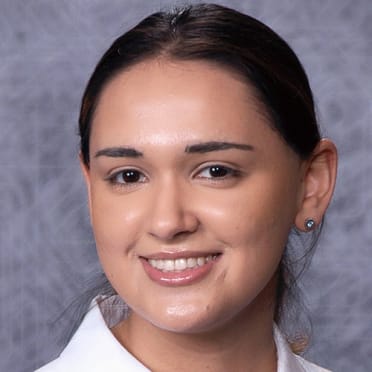Who takes the hardest swings on each MLB team?
The Statcast era of baseball research has reached another milestone: bat speed is live on Baseball Savant. You can check out this page for more thorough details on what bat speed entails and how it’s calculated. But in the meantime, we’re kicking things off by breaking down the best of the best: each team’s leader in average bat speed.
To clarify, a player’s average bat speed, by our definition, is the average bat speed across the top 90% of his swings – in other words, excluding “swords” and other swings that may have been incomplete. Below, we analyze all 30 teams’ leaders in average bat speed this season, among those with enough swings to qualify for our leaderboard.
Note: All stats are up to date through Sunday's games.
Jump to: AL East | AL Central | AL West | NL East | NL Central | NL West
AL EAST
Blue Jays: Vladimir Guerrero Jr. (75.6 mph)
By conventional metrics, Guerrero has had somewhat of a down year in 2024, with his slugging percentage (.390) and OPS percentage (.753) both comfortably on pace to set career lows. If his bat speed is any indication, though, he’s due for a bounceback. In addition to his 75.6 mph average bat speed (14th in MLB), he also ranks in the 80th percentile or better in xBA, xSLG, xwOBA, average exit velocity, hard-hit rate and barrel rate, suggesting that things are not nearly as bad as they might seem in Toronto.
Orioles: Gunnar Henderson (75.6 mph)
As if we needed any more reasons to draw our eyes to one of the sport’s most exciting young players, bat speed provides another one. The reigning AL Rookie of the Year and Silver Slugger Award winner has been even better this season, ranking tied for second in MLB with 12 home runs. His advanced metrics certainly suggest that this production is here to stay for the AL-leading Orioles, including a stellar 94.5 mph average exit velocity that ranks tied for fifth in MLB.
Rays: Randy Arozarena (72.8 mph)
Like Guerrero, Arozarena has struggled out of the gate to open this season. As a matter of fact, his .158 batting average ranks last among MLB’s qualified hitters. When he has made contact, decent things have happened, as his 89.9 mph average exit velocity is ahead of MLB’s average of 88.5. However, a 35.3% whiff rate, which ranks in the fifth percentile of MLB this season, has been his downfall.
Red Sox: Tyler O'Neill (74.8 mph)
Fortunately for Boston, O’Neill isn’t just an Opening Day superstar. Though he began his debut season with Boston by homering on Opening Day for the fifth straight time, setting an all-time AL/NL record in the process, he’s proven since then that he’s far from a one-hit wonder. His .564 slugging percentage and .941 OPS are both on pace to be career highs, as the right-handed power hitter has been an extremely comfortable fit in the land of the Green Monster. Much thanks to his strong bat speed, he ranks sixth in MLB in barrel rate.
Yankees: Giancarlo Stanton (80.6 mph)
They referred to a former Yankees slugger as the Sultan of Swat. Since that nickname is taken, we can instead give Stanton this one: the Savant of Speed.
Not only is Stanton MLB’s leader in average swing speed, but his margin at the top is so tremendous that it’s difficult to comprehend. Stanton’s average speed of 80.6 mph is 2.9 ahead of the second-place player, Oneil Cruz at 77.7. For the sake of comparison, that’s the same gap as the one between second place and 26th place (O'Neill, 74.8).
On a similar, and perhaps even more absurd, note, Stanton has had a hard swing (75+ mph) 98.0% of the time this season. The next-closest player in that regard is Kyle Schwarber, way down at 73.9%. When all is said and done, we already knew that Stanton accounted for 14 of MLB’s 18 balls hit at least 120 mph in the Statcast era. Now we have a better idea why.
AL CENTRAL
Guardians: Gabriel Arias (74.0 mph)
The results at the plate have not matched Arias' bat speed just yet, as the 24-year-old has a .608 OPS for Cleveland this season, to go with a .626 mark over 164 career games going back to 2022. A lot of that speaks to his swing decisions, as Arias has a 41.9% chase rate, with 27 strikeouts and only two walks this year.
Royals: Bobby Witt Jr. (75.2 mph)
It’s hard to find a Statcast metric in which Witt DOESN’T lead the Royals offense, and bat speed is no exception. Witt’s average bat speed is just above the 75 mph “fast swing rate” threshold, as 52.9% of his swings have clocked in above that mark. Witt produces his strong bat speed on a swing averaging just 7.0 feet in length, the shortest swing among eight qualified Royals hitters.
Tigers: Javier Báez (75.4 mph)
At 8.7 feet, Báez possesses the longest swing among qualifying MLB hitters, but he also has the fastest swing of any Detroit hitter. With 57.4% of his swings considered fast swings, Báez -- despite a 44.7% chase rate that ranks among the worst in MLB -- can still get the bat to the ball quickly.
Twins: Ryan Jeffers (73.2 mph)
It's worth noting that while Jeffers has the lead among Twins hitters with enough swings to qualify, he'd be well behind Byron Buxton (74.7 mph) and Carlos Correa (74.4 mph) if they made the list. However, Correa spent time on the injured list earlier this season, and Buxton is there now. With that said, Jeffers has been Minnesota's biggest offensive threat this year, slugging .617 with a .988 OPS.
White Sox: Eloy Jiménez (74.5 mph)
Jiménez leads the way on a White Sox team that ranks 29th in MLB in bat speed (70.3 mph). Just below half of Jiménez’s swings (47.6%) have checked in above the 75 mph fast swing mark. The righty slugger ranks in the 79th percentile or better in MLB in average exit velocity, barrel rate and hard-hit rate, and his above-average swing speed is a definite factor.
AL WEST
Angels: Jo Adell (76.3 mph)
Once upon a time, Adell was the Angels’ top prospect because of his power-speed potential, which he’s beginning to realize here in his fifth Major League season. 64.7% of his competitive swings this year have been 75 mph or higher, putting him among the top 10 in fast swing rate.
Astros: Yordan Alvarez (75.9 mph)
If you’ve laid eyes on this guy, you know he can hit a baseball as hard as anyone. Last season, he ranked in the 99th percentile with a 18.0% barrel rate, but we don’t even have to go back that far -- he hit a 116.8 mph home run as recently as Thursday.
Athletics: Lawrence Butler (74.5 mph)
Butler hasn’t hit much yet -- he has a .275 slugging percentage this season -- but he does have a quick, tight swing, which isn't a bad place to start. Despite being listed at 6-foot-3, Butler’s 7.1-foot average swing length is a little below league average (7.3 ft.).
Mariners: Julio Rodríguez (76.2 mph)
Slow start aside, Rodríguez isn't too far off of being the player who hit 60 home runs in his first two Major League seasons -- in fact, his 93.1 mph average exit velocity is actually a career high.
Rangers: Wyatt Langford (74.0 mph)
Few could have anticipated the first month of Langford’s big league career shaking out the way it did -- over his first 31 games, his on-base percentage (.295) was higher than his slugging percentage (.293), and a Grade 1 right hamstring strain is expected to keep him out at least until the end of the month. That said, there’s no denying that he has plenty of power behind his swing, as evidenced by his average bat speed (and, of course, the six home runs he hit during Spring Training.) Among Rangers currently on the active roster, Adolis García leads the way at 72.5 mph.
NL EAST
Braves: Ronald Acuña Jr. (76.7 mph)
It’s no secret that Acuña’s production has dropped off from his legendary unanimous 2023 MVP season. But what has remained intact – and what provides hope that he’ll get back to his All-World production soon – is his ability to swing the bat hard. His average exit velocity and hard-hit rate are both in at least the 83rd percentile of MLB. After all, he leads MLB in 460-foot home runs since he debuted in 2018 for a reason.
Marlins: Jesús Sánchez (75.5 mph)
It’s no secret that 2024 hasn’t been a pleasant season for the Marlins. And that extends to Sánchez as well, whose slugging percentage (.321) and OPS (.601) are both career lows in a season in which he’s played at least 20 games. But for what it’s worth, he ranks 17th in MLB in average bat speed, which has allowed him to have an average exit velocity in the 96th percentile.
Mets: Pete Alonso (74.9 mph)
Alonso moves a little bit faster than the typical “Polar Bear.” Even though the three-time All-Star has struggled by many advanced metrics, he’s still crushed a team-high nine home runs, largely due to his ability to make hard contact. Dating back to last season, Alonso ranks tied for ninth in MLB with 77 barrels.
Nationals: CJ Abrams (72.7 mph)
The 23-year-old Abrams has been the breakout star of the Nationals’ season, proving that he’s a lot more than a former top prospect who was good at stealing bases a year ago. His .520 slugging percentage and .858 OPS both lead Washington’s qualified hitters, and as a matter of fact, he’s achieved those numbers despite some bad luck. Both his batting average (.277) and his wOBA (.367) are lower than his “expected” values in each stat (.318 and .385), suggesting that the potential is sky-high for this rising star.
Phillies: Kyle Schwarber (77.0 mph)
Schwarber has long been established as the ultimate boom-or-bust hitter, making it very unsurprising that he finds himself on this list. His average bat speed ranks third in MLB, behind only Stanton and Cruz, while his 73.9% hard-swing rate (recall, that means 75+ mph) trails only Stanton. He’s certainly not the conventional leadoff hitter – ranking second in MLB with 11 “swords,” behind Zach Neto – but he’s been a successful one, cranking nine homers for a Philadelphia team that’s crushing everything in sight.
NL CENTRAL
Brewers: William Contreras (74.2 mph)
Contreras has had a stellar start to 2024, sporting a .346/.429/.526 batting line coming into Sunday. The young catcher has been among the elite hitters at his position since being acquired in the three-team deal that sent Sean Murphy from the A’s to the Braves before the 2023 season, and his bat tracking metrics back it up: Contreras leads his club in fast swing rate and competitive swing rate as well as in average bat speed.
Cardinals: Willson Contreras (75.7 mph)
Contreras is technically the Cardinals’ bat speed leader at 75.7 mph (tied for 12th in MLB), but he fractured his left arm while catching on Tuesday against the Mets and will be out roughly 10 weeks. As such, the de facto leader is second baseman Nolan Gorman (72.4 mph). Gorman has been good at squaring up the baseball in 2024, ranking in the 97th percentile in MLB in sweet-spot rate. The lefty infielder slugged 27 homers last season and leads St. Louis in average bat speed -- among healthy players, anyway.
Cubs: Christopher Morel (76.7 mph)
Morel’s lead among qualified Cubs hitters in bat speed is massive, with Ian Happ coming in a distant second at 72.0 mph. The 24-year-old Morel is producing fast swings (75+ mph) at a 71.0% clip and leads his team with a 91.3% competitive swing rate. Morel leads the Cubs with eight homers so far in 2024, and his quick bat is a good reason why.
Pirates: Oneil Cruz (77.7 mph)
Cruz’s elite bat speed is second in MLB behind only Stanton, and the 6-foot-7 shortstop leads his nearest Bucs teammate (Rowdy Tellez) by more than 3 full mph of bat speed. A 73.5% fast swing rate helps Cruz absolutely destroy the ball when he makes contact -- he owns the hardest-hit ball (122.4 mph) of the Statcast era (since 2015).
Reds: Elly De La Cruz (74.9 mph)
Elly bucks the trend on a Reds team that ranks 24th in the Majors in bat speed with a 70.8 mph average. The second-year star, who already has nine home runs and an MLB-high 25 stolen bases, has surpassed 75 mph on more than half of his swings, and his average sits just below that fast-swing benchmark.
NL WEST
D-backs: Christian Walker (74.5 mph)
Walker has hit 30 home runs in each of his last two seasons, so his great bat speed clearly isn’t new, but there is an interesting wrinkle to be found here -- his barrel rate has absolutely skyrocketed in 2024, now up to 17.6% from 11.4% in 2023.
Dodgers: Shohei Ohtani (75.4 mph)
This one’s almost a given. Amid what could be his best offensive season -- obligatory (and needless) reminder that he already has two 40-homer seasons under his belt -- he leads all qualifying hitters with a 23.6% barrel rate, which is also a personal best.
Giants: Matt Chapman (76.9 mph)
Chapman doesn’t really meet the modern definition of a power hitter, but he’s maintained a near-constant presence near the top of the hard-hit rate leaderboard for several years. Now we know why. Chapman’s average bat speed is the fourth-highest among qualifying Major Leaguers behind Stanton, Cruz and Schwarber -- but it’s the names that don’t appear above him that really say it all, isn’t it?
Padres: Fernando Tatis Jr. (74.6 mph)
Tatis (74.6 mph, 6.8% fast swing rate) and Manny Machado (74.5%, 46.7% fast swing rate) are about as close as two teammates could be in terms of bat speed, with Tatis ahead by an eyelash through Sunday. While Tatis' raw numbers have not been huge so far in 2024, his quality of contact has been excellent, and he ranks in the 93rd percentile in expected batting average, slugging and wOBA.
Rockies: Elehuris Montero (75.1 mph)
The results definitely have not matched the bat speed for Montero, who often struggles to make contact and has posted a -11 batting run value this year, among the lowest in MLB. But there’s evidence of this bat speed to be found, if you’re willing to look for it -- 25 of his 94 batted balls on the year have clocked in at or above 100 mph, topping out at a 114.1 mph single hit against the Blue Jays on April 14.






